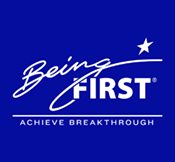
The magnitude and complexities of today's pace of change mean continuous disruption to the operations and workforce of your organization. When you are in the midst of major change, one of the smartest things you can do as a leader is to consciously create the experience of stability—at least some stability.
This article reviews the six key strategies for ensuring the sense of stability while your organization changes.
Creating Stability in Fast-Changing Organizations
Creating stability may appear counterintuitive in a fast-changing organization, especially if you are aggressively investing in your people's change readiness and capacity.
The experience of stability is not intended to stop or reduce the impact of change; it is designed to give people a greater sense of control and balance to fuel their ability to actually make change in a way that works for them.
The Value of Stability During Transformation
You could interpret the term stability to mean “things staying the same,” which is the opposite of transformation. Stability in the context of transformation is the ability to hold steady amidst the disruption of moving forward. It is foundational to creating confidence, knowledge, clarity and predictability—all assets during transformational change. If you lead your changes so that everything important to people is in flux over a long period of time, people can burn out, become dysfunctional, or struggle with emotional crisis. None of these is good when you need your organization to change in major ways and still function effectively.
The key is balance! Build in conditions that enable your people to access some stability amidst change, to consciously build in the familiar and predictable while the chaos of transformation unfolds during the full lifecycle of a change initiative. Here are strategies for doing this.
1. Maximize What Stays the Same
In the early stages of change, you will have clarified what needs to change in your organization, identified your desired outcomes, and performed an initial assessment of the magnitude of what you are about to do.
Before communicating your case for change and your strategy for making this change, think through how much of your organization and culture already supports your future state, and can stay in place.
One principle of good change leadership is to change as little as possible and carry forward the best of what already works to support the creation of your new reality. Do not “throw the baby out with the bath water”! Recognize and maximize what is already familiar and effective that fits the future you are creating. As long as they are fully aligned with the true needs of your future state, it takes less energy to move forward with the familiar and effective aspects of your business than to recreate everything.
2. Communicate to Provide Clarity and Comfort During Transformation
Communicating during change is essential. Well-informed people are far more confident than those kept in the dark. So are those who are given the time to understand the implications the changes will have for them and their work—before they are cast into the throes of the disruption. Don't impose change on your people by surprise. Design your change communications to optimize understanding and maximize time for inquiry and emotional adjustment. Frequent communications about your outcomes, your change roadmap, and the status of events can help people to feel things are “under control.” The clearer you are about what you are asking of the people who must make the change on the ground—with some time for the news to settle, the more comfort you will create for them.
Beyond communicating about the change, also convey your organization's operating achievements. It is hugely satisfying for people to know the organization remains effective while it is undergoing so much change.
Maximize familiarity. Keep your people informed and engaged in the activities of the change using terms they understand. Do not move to new terminology or jargon without fully ensuring that your people are comfortable with the new concepts or terms. It’s better to continue with language they understand until their role in the new state is clear and underway.
3. Minimize Disruption During Transformation through Good Planning
There are three components to good planning: logical sequence, timing and capacity to act. Take care of all three as you create your roadmap for change. Even if your people must undergo huge changes, a clear and logical process plan will add to their sense of stability, as will a realistic timeline and the space and skill to perform the work required of them.
Think of the comfort you experienced the last time you used your GPS to drive to a new destination. The detailed guidance was clear, sequenced and informed by appropriate distance markers. And presumably, you had the ability and time to accomplish the drive. The same is true for your change plan. Make sure your people have the time and ability to complete their change responsibilities as well as their ongoing workload. Do not impose the change on top of people's stretched operating workloads. You cannot drive in two different directions simultaneously, and neither can your people. Both change and operations require their attention, so ensure that they have the time and capacity to realistically do both.
We must note that the GPS analogy only goes so far with complex change. Given the unpredictability of most large-scale changes, be sure that you upgrade your roadmap in a timely and clear manner when you need to alter course. Set the expectation for such course corrections early (they are inevitable!), and then communicate them without drama. Your plan, no matter how well conceived, will need to be adjusted to your change reality. It is critical that your people understand this part of making change and do not get caught off guard by it.
4. Maximize Early Employee Engagement
Engaging your people early on can minimize the emotional upset of change. Engage them in figuring out how the organization needs to change and how you—and they—collectively will make it happen. People who invest in the questions about change—the what, the why and the how—will be far more comfortable with making the change they have shaped. Engagement is a key strategy for ensuring stability.
It is very important to engage your people in figuring out the impacts the change will have on them and their part of the organization. When they have a chance to think through what is being asked, and what it means to their work, they can more easily identify what they can carry forward that already fits the requirements, and what they need to stop, dismantle, or create anew. This level of forethought, when supported with time and encouragement, is a strong contributor to people's sense of comfort, even if the information they produce means making a lot of change.
5. Reduce the Negative Impact on People
Once you know your desired outcomes and their implications, think ahead about the impact of the change on your key stakeholders. Will many people lose jobs? Will they need to move or be trained in new skills or technology? If so, use this data to create “temporary” policies and actions that will affect your people in less stressful ways.
Temporary policies and practices can greatly reduce people's upset, such as ensuring employment security, salary protection, and training in new skills or technologies. If your change means significant displacement of people, you can guarantee a range of support to those affected to ensure they will land on their feet. Communicate these policies and actions on the heels of your initial announcement about the change. These declarations early in the process, can generate good will and minimize upset. Then be sure to fulfill your promises as you go!
6. Design Your Change Process to Maximize Stability
Beyond communication, there are two key strategies for your change process that can give people greater stability. The first is the timely celebration of milestone achievements along the way. Celebrate the progress you are making in public and in engaging ways. Recognize the people who are modeling the new behaviors and working in the new ways. Engage the groups of people most affected by the change in these celebrations. Your intention is to create conditions where they like this new state they now need to live in.
The second strategy is to build in mechanisms, time, and events to ensure integration and mastery of the new state beyond initial trainings and pilots. These follow-up events or meetings can help people understand, settle into and develop competence in the new state. People need time to figure out how to make things work, and to explore and refine their best practices. You can also design these experiences so people see the big picture of the new organization, and where they fit in it. From this larger perspective, it is easier for them to build relationships across organizational boundaries so that everyone can master their part of the whole. This can have a very beneficial effect on stabilizing the new state.
Accelerate the Achievement of Your Outcomes
Proactively building in ways to maximize the experience of stability during change can ease the challenges to your organization for both operating effectively and making major change. You can create a balance between the dynamics of change and the comfort of stability that can help you accelerate the achievement of your outcomes without undue burden to your people. Take advantage of the value and power of stability during change. It is smart change leadership.
Related Workshop On-Demand:
How to Launch Transformational Change Projects Successfully
Instructor: Dr. Linda Ackerman Anderson
Watch as Dr. Linda Ackerman Anderson explores the six critical areas sponsors and change leaders must attend to when planning and preparing their team to launch transformational change projects.
